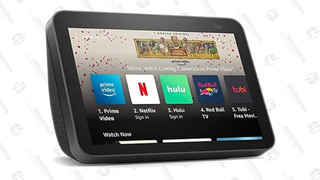These days, the Blockbuster Game, a release from a major publisher that’s hoping to be an Event that occupies everyone’s attention and Game of the Year discussions, is an institution. It’s easy to tell what such a game is in its current state, as it’s typically about fathers trying to connect with their previously neglected children or features a prominent B-list actor or two in its cast. But in the early days of this trend, the ur definition of it would arguably be Halo 3.
Developed by Bungie and released on September 25, 2007 for the Xbox 360, Halo 3 was in every sense of the term a big deal for Microsoft and the broader games landscape at the time. With the sting of Halo 2’s cliffhanger ending from 2004 still fresh in players minds, whether Bungie could release a satisfying closer to its trilogy—a word that feels ancient now, since franchises either don’t get to a trilogy or go far beyond that—was the big question at the time. It was a question that grew as Bungie put much of the marketing focus on multiplayer, and was noticeably cagey on the game’s campaign until a handful of months before release. When it was eventually revealed that the campaign was effectively a team up between series lead Master Chief and Halo 2’s deuteragonist the Arbiter to save Earth from the Covenant and the Flood, it felt like a genuine surprise.

Halo has always been a pretty popular franchise, but it was during the original Bungie tenure, and with the release of Halo 3 in particular, that the series was at its peak. Halo 2 had a healthy lifetime thanks to DLC, and being playable on 360 thanks to backwards compatibility served as good incentive to get the console well before the release date of the threequel. Excitement for the game and the desire to play it was so high that including it with fellow Xbox 360 Crackdown helped drive the sales for that game. (It’d become a lovely bit of serendipity when it turned out that Crackdown was pretty good in its own right.) Even after the game came out, Microsoft knew it had a golden goose and didn’t let you forget it. Similar to Crackdown, both Halo Wars and Halo 3: ODST from 2009 had DLC maps for Halo 3 as further incentive to buy those games.
Beyond the beta, Microsoft and Bungie went out of their way to make the game’s release feel like a Big Deal, and not just with merchandise like limited edition consoles and controllers. Microsoft wanted to make sure the game was marketed beyond already bought in fans, and spent over $40 million to make it happen. There were a multitude of commercials that remain memorable to this day, such as the “Believe” promo featuring minifigures, the “Iris” alternate reality game, and the “Starry Night” commercial that gained fame by premiering once, during an ESPN game on December 2006.
G/O Media may get a commission
Ultimately, Halo 3 would sell 5 million copies by the end of the year, become one of the best-selling games of 2007, and bring in over a million Xbox Live players within its first 20 hours of release. Such a success it was that movie executives blamed its release for the flop of Ben Stiller’s The Heartbreak Kid (seriously). It was the kind of hit—one that drew in both fans and people who may not have even knew before this what Halo even was—that games just aren’t always are these days, at least until Legend of Zelda: Breath of the Wild in 2017. That games are slowly but surely becoming more of a widely accepted cultural institution can be in part attributed to Halo 3 and the efforts that Microsoft made to make it look appealing to people beyond those already ride or die for the franchise.
There have been games that surpassed Halo 3 in terms of sales and critical reviews. You could certainly make the argument that it was on the low end of 2007’s best games, a year that had some very great games towards the end. But in terms of what Halo 3 is, as a cultural touchstone that came to serve as a benchmark for what makes a triple-A game stand the test of time and matter beyond its insular audience, Bungie’s trilogy closer is in a league all its own.
Want more io9 news? Check out when to expect the latest Marvel and Star Wars releases, what’s next for the DC Universe on film and TV, and everything you need to know about House of the Dragon and Lord of the Rings: The Rings of Power.


Be the first to comment